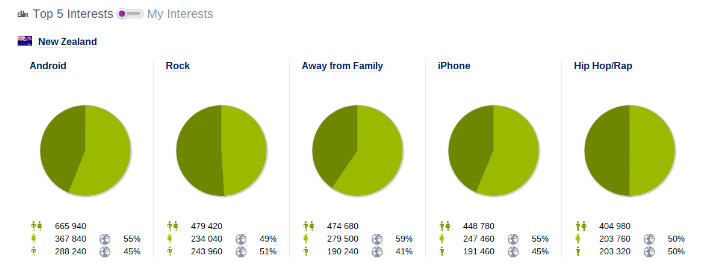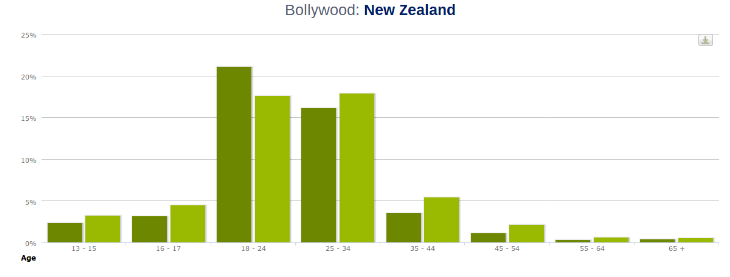Content marketing has gone from being the future of digital marketing, to the here and now, but where does social media sit within the overall content marketing strategy mix?
Our view on social’s role in content marketing is threefold:
- Social should play a key role in informing content strategy
- Facebook, Twitter, Pinterest, Google+, YouTube, Instagram, LinkedIn and so on are all valid platforms that should be used as part of your content strategy
- Social media (particularly Facebook) has a unique ability to amplify your content placed on other channels
Social Media’s Role In Informing Content Strategy
Social data is an absolute core component of creating a content strategy. From deciding what to create content about, to the weighting of that content within your overall plan, the data you can pull from social should be integral to your thoughts.
There’s a whole host of great tools you can use to get insight in-house, such as:
– Followerwonk: Followerwonk allows you to analyse any Twitter audience by age, location, and bio word clouds to give you a flavour of your audience. Combine this with the most influential followers and see who they are and what you do to give yourself a headstart
– Unmetric: Unmetric allows you to track your competitors social media content and get alerted when there are spikes in engagement levels, allowing you to react or use historical data to plan future activity
– Twtrland: this tool allows you to delve into the Twitter data of any profile to see their most influential tweets, top followers, and basic demographics
We use a mixture of these tools, and some of our own data sets to really understand a target audience in advance of planning content. Outputs from various tools are used as part of the idea creation process, such as this Followerwonk word cloud of the bios of @datifyuk followers for instance:

Or this Socialbakers data based on the top Facebook interests by market, and the age split of people interested in Bollywood in New Zealand:


When you start adding of all of this data into the mix you can start to take intelligent decisions about your content marketing to make it more effective and relevant for your target audience.
Use Social Platforms As Part Of Your Content Strategy
Many brands will see their content strategy as having two sides, on-page (website), and off-page (guest posting/outreach led). Social often gets missed as a crucial part in between. Not only can social help you identify who to outreach to, but should be used as a platform for your content to drive engagement with your brand.
Your Facebook or Twitter updates should form part of your overall content strategy, and tailoring your content across various channels with a focus on social will always be beneficial. In Moz’s recent search rankings factor survey the majority of search marketers surveyed felt that social signals, and in particular the overall influence of Google +1’s on rankings would continue to increase in the future, again showing why social channels should be integrated into your strategy now.
Regardless of which channel works best for you, having a presence across each is important, even if only to own your brand name and keep people aware of you across their chosen channels. Google Plus is a good example of this – the users numbers are high, but interaction levels generally low (outside of the digital marketing community!). However, due to the increased importance Google are likely to place on this as a ranking factor for your content and therefore your site it is crucial that you keep this channel burning with your social content even if only with a few updates a week of content amended from another platform such as Facebook.
Amplify Your Content
Where social really can benefit your content marketing efforts is in putting your content in front of new audiences that are highly relevant and ready to engage. Whether your social audience is big or small, with Facebook, Twitter and LinkedIn you can now amplify your content through native paid means to reach new audiences at a relatively low cost compared to other channels. At Datify, we do this for nearly every piece of content we create to ensure that reach is good when our clients have invested.
What’s more, the targeting across all three of these channels is very detailed, with Facebook in particular having multiple targeting levels that can enable you to find your perfect audience in this environment. This can enable you to create an initial buzz around your content, or keep traffic sustained after the initial outreach push.
Being able to target people who engage in other topics in your niche, who are in the right location and the right age grouping is a great opportunity, and can be very cost effective if managed correctly.
Whilst Matt Cutts has denied Facebook and Twitter’s social sharing signals are included as major ranking factors, they are still important as part of your content marketing efforts. Driving increased traffic to the content you create not only generates social shares, but also has the impact of creating ‘earned’ links, brand interactions and the potential for new business.
Facebook is particularly strong for amplifying your content. By using Power Editor you can ensure that your content is only seen in relevant News Feeds of the exact type of person you want to be viewing your content.
Summary
In summary, don’t think of social media as a completely separate discipline to content marketing – in fact, don’t separate the two at all. Social media should be completely integrated into everything you do – from informing your overall strategy, to being included as a platform to think about, and to increasing the distribution of your content.
Embrace social, particularly the paid amplification piece, to ensure that you can drive content marketing success for your clients.
Written by: Ben Harper, socialmedia today
Posted by: CueCamp


